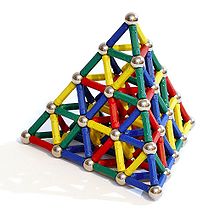The choices a teacher makes in his/her classroom send a message. "The environment contributes to setting the tone of the school day for both the children and the teacher. An organized, attractive, clean and warm setting results in more positive behaviors and attitudes." (Eliason&Jenkins, 34) Visual presentation of artwork, posters and lessons for learning easily fill preschool and primary school classroom walls becoming a busy collection of colors and images. Clutter in young children's school environments is common and for many students may not be an issue. But, for some students the visual chaos, particularly on the walls, truly affects their learning and overall success. For some students these busy walls simply add to the activity and disorder they are experiencing inside their bodies and minds.
Children Who are Affected by Busy Walls and Clutter
Scanning The Classroom
Tips on Setting Up a De-Cluttered Walls and Space
- keep some wall space completely free of items
- choose an organized technique when displaying art with equal spaces in between to help create a visual flow
- avoid hanging artwork from the ceiling
- current items on walls should be relevant to the season and topics
- sometimes less is more
- consider paint on walls and choose a soothing background color
- when displaying the student's artwork, select pieces that are less busy and have similar patterns, for instance, handprints versus finger painting
- store away papers, books and such in closed compartments to limit visual clutter
- pick adjectives to describe your ideal room and try making the environment match those words
An organized, de-cluttered, calming and welcoming room is not only going to help the children with sensory and behavioral challenges, but the rest of the classroom and the teacher will benefit from this space as well.
Source: Eliason and Jenkins, A Practical Guide to Early Childhood Curriculum, 6th Ed., United States: Merill Publishing, 1999.








